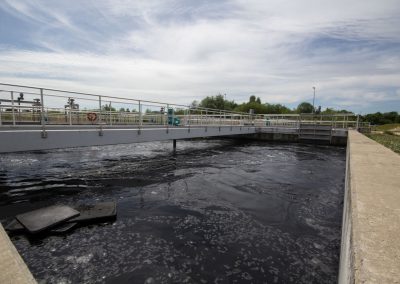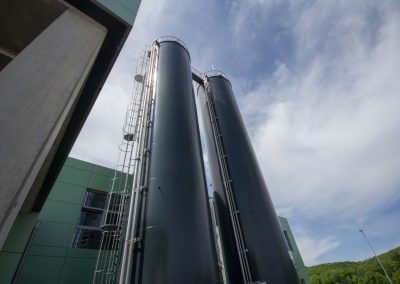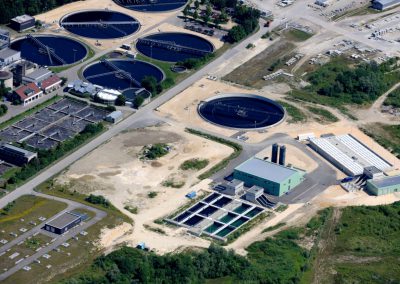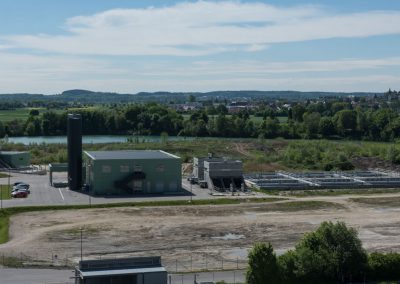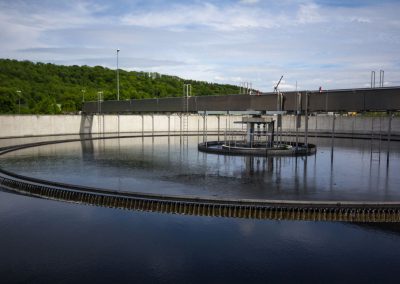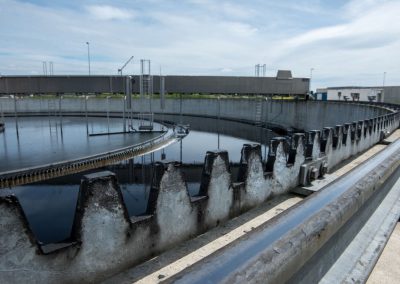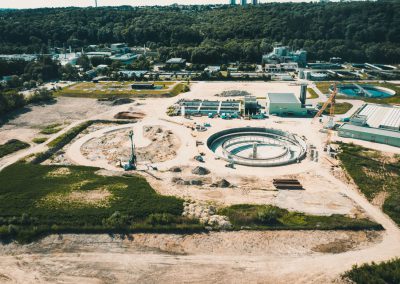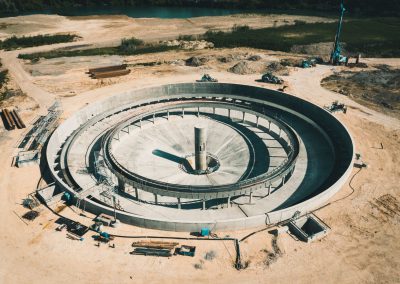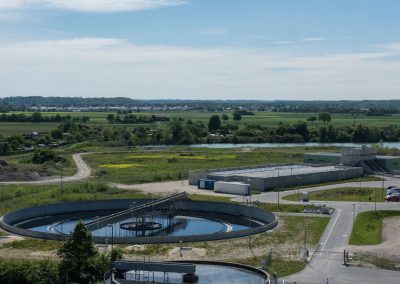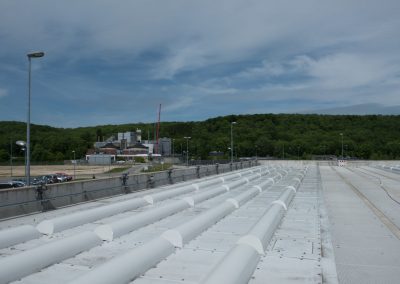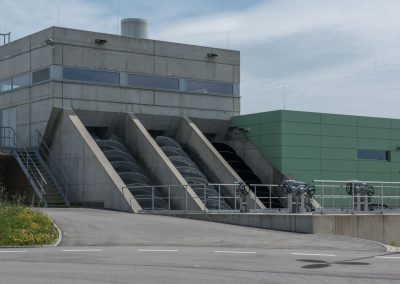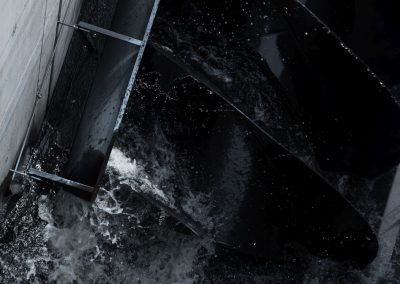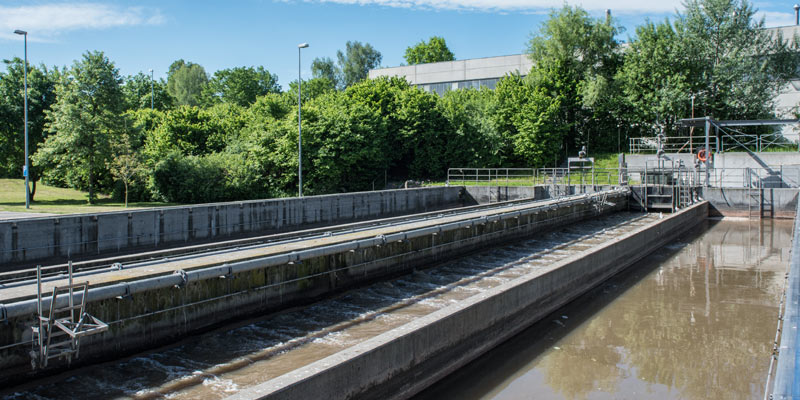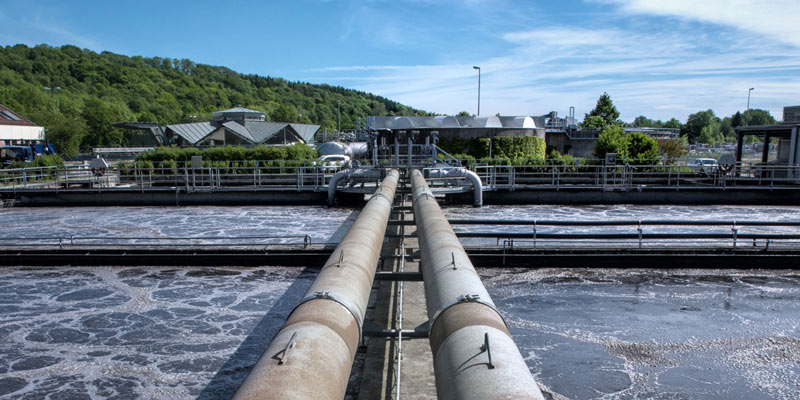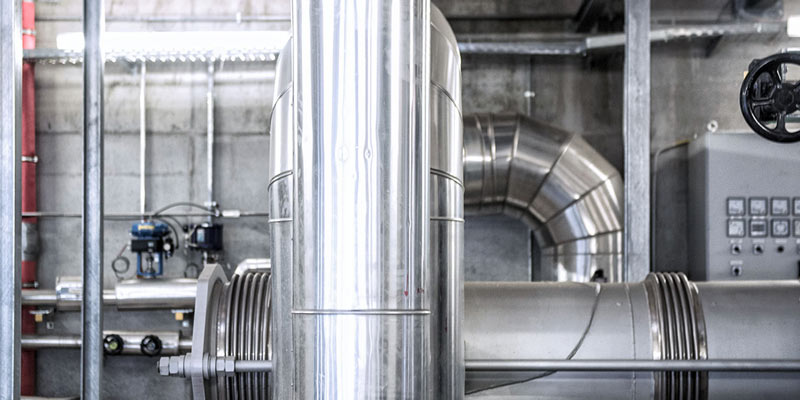Adsorptive treatment
After the wastewater is treated mechanically, biologically and chemically, it still contains various micropollutants and bacteria. The adsorptive treatment stage helps remove most of these micropollutants and some of the bacteria. They are removed and disposed of by incineration of the excess sludge. The micropollutants include pharmaceutical residues, radio-opaque substances, hormones, biocides, corrosion protection substances, disinfectants, pesticides and poorly biodegradable compounds. These are on the rise due to, among other things, modern medical treatments and therefore necessitated an additional treatment stage.
In the adsorptive treatment stage, an adsorbent of powdered activated carbon is added to the water and the micropollutants stick to its very large surface. The powdered activated carbon along with most of the micropollutants are removed from the wastewater via sedimentation and filtration.
01 Contact Reactor
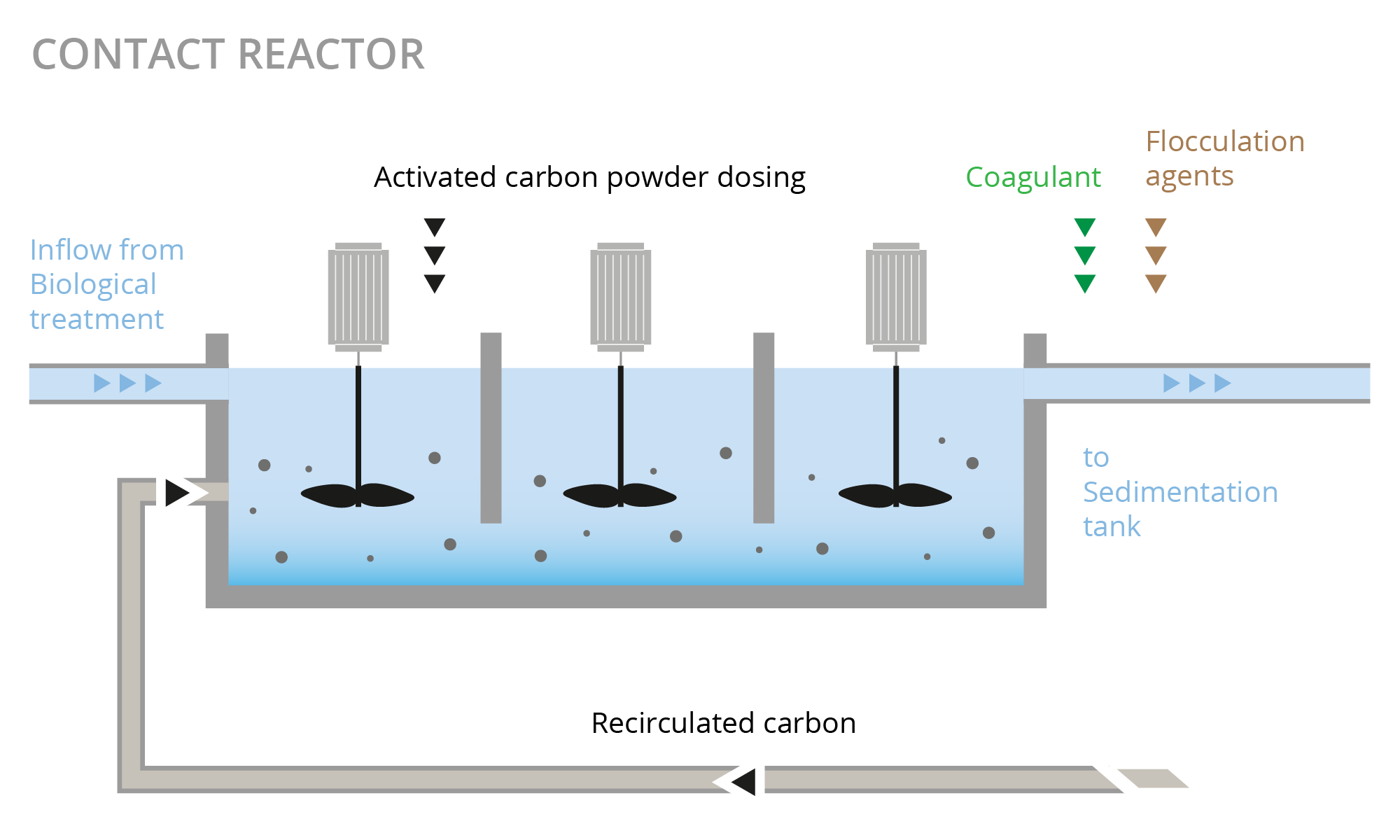
The mechanically and biologically treated wastewater then flows into the contact reactor, where activated carbon powder is added. The wastewater is well-mixed with the activated carbon powder such that the activated carbon adsorbs the medication residues, chemicals, hormones, etc.
02 Sedimentation tank
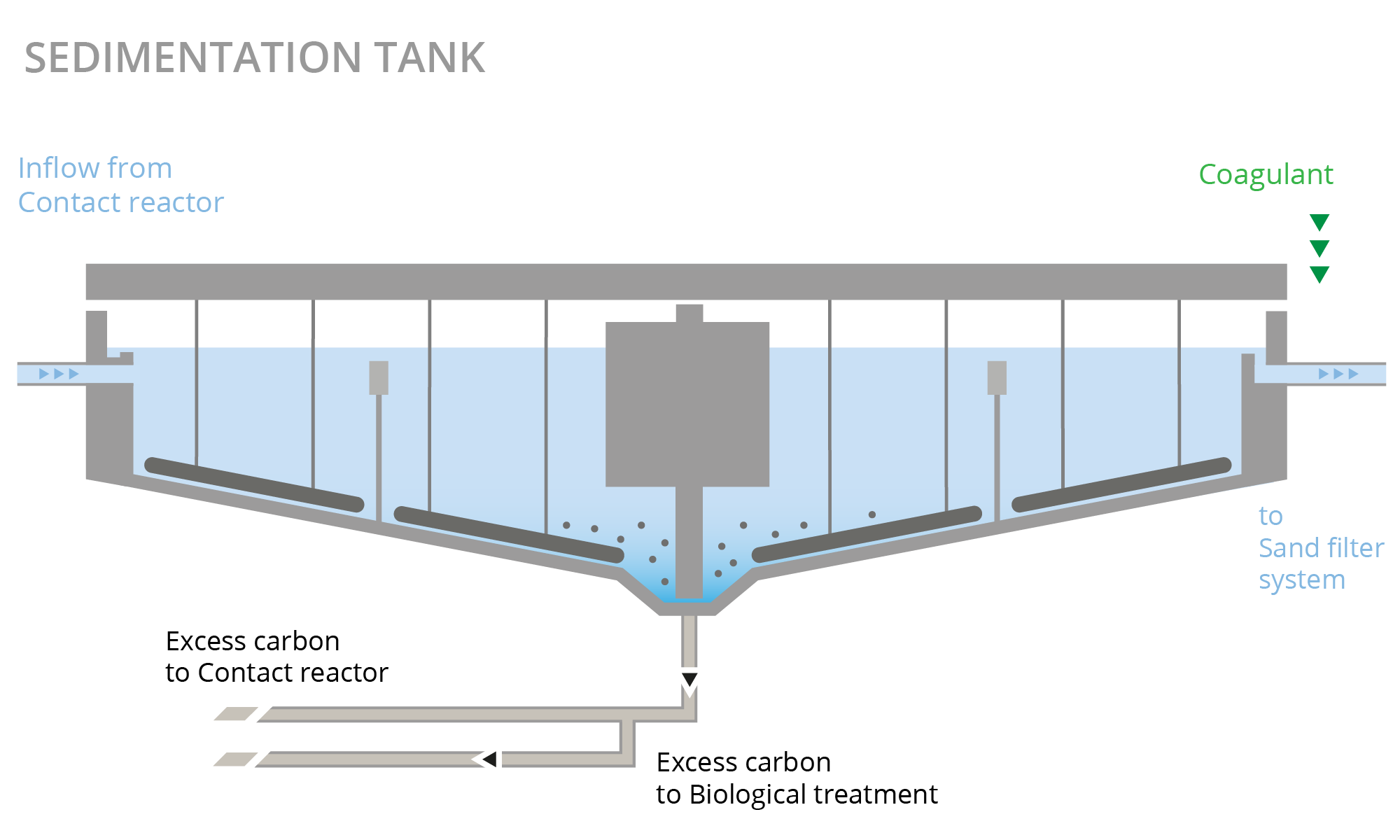
Aluminum salts and polymers are added as coagulant and flocculation aids to achieve better sedimentation of the activated fine carbon. The activated carbon sludge that settles at the bottom is returned to the first cascade of the contact reactor as return line carbon to achieve multiple loading and reused as adsorbent.
From the adsorption stage, the excess carbon goes to the biological stage. With the excess sludge, the activated carbon goes from the biological treatment stage to the sludge treatment/recycling. The carbon and sludge are thermally recycled in the incineration plant and micropollutants are destroyed.
03 Sand filter system
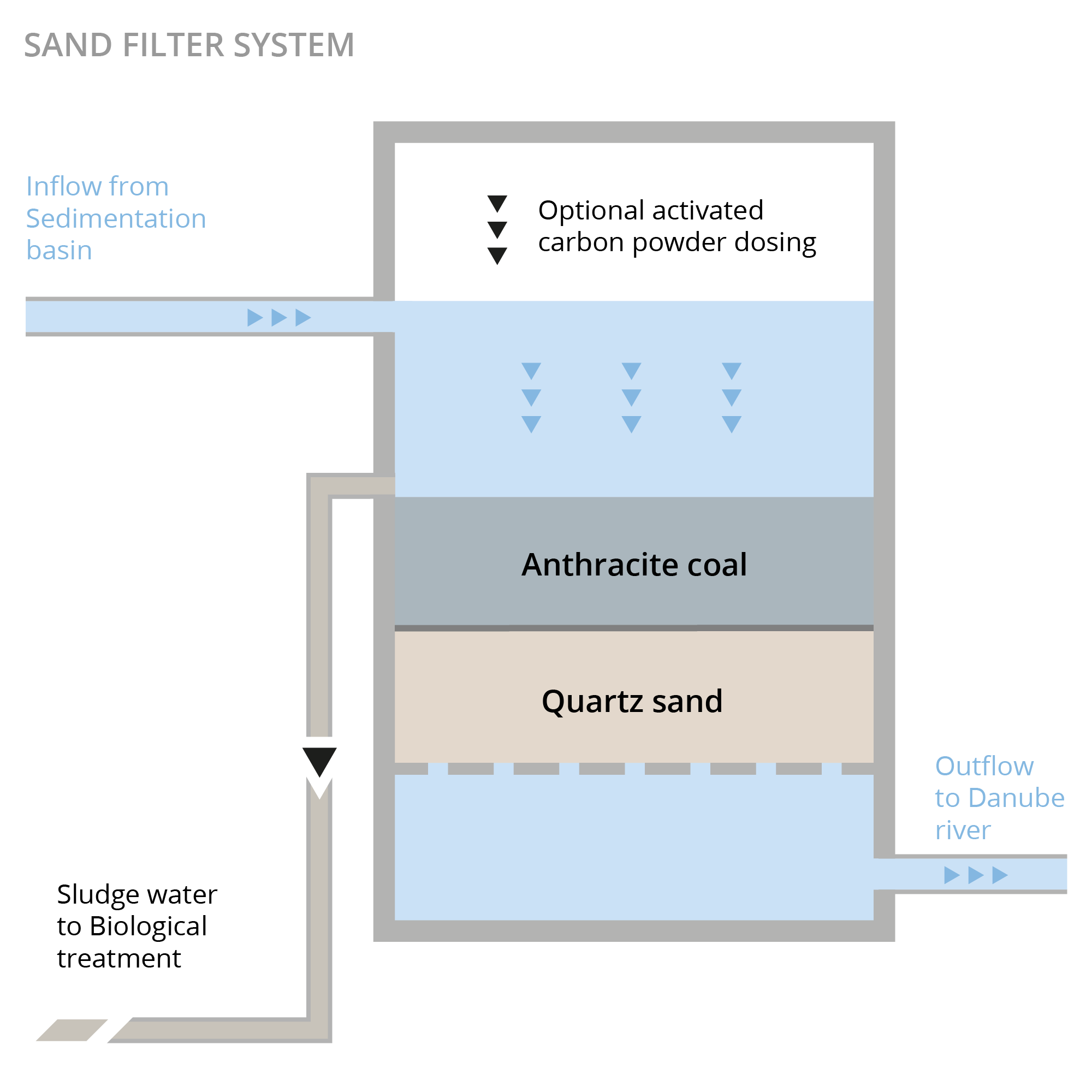
The activated carbon powder and residual organic substances are separated from the wastewater during the sedimentation. A filtering system is required to ensure that nearly all solid matter is removed from the water treated in the treatment plant.
A coagulant is added to condition the particles for better filtration. The wastewater with the powdered activated carbon and residual organic substances flows through a two-layer filter which has anthracite coal on top and quartz sand at the bottom. Contaminated water generated by the filter treatment goes back to the biological treatment stage, whereas the clean wastewater flows into the Danube river.
